Using genome analysis Wu et al (2021) found that several citrus types of the Ryukyu archipelago are related to each other as half-siblings with Kunembo mandarin as their common seed parent and with different pollen parents belonging to the native C. ryukyuensis. The specific name yukunibu means “sour citrus” in Okinawan dialect and is colloquially used locally.
Yamamoto et col. in 2019 demonstrated in many species of this group a large amount of a component called “polymethoxyflavonoid” cancer-suppressing and effective against Alzheimer’s disease . This ingredient is almost absent in mandarines and other sour citrus fruits. Polymethoxylated flavones (PMF, tangeretin, nobiletin and sinensetin) are characteristic substance of Shiikwaasa and are also found in almost equal amounts in Kabuchii to a lesser extent in the Oto and Keraji. Since Kunembo is also virtually free of this component, it can be assumed that Tanibuta is the origin of this characteristic as a parent..
The most important members of the group are listed below, but several other hybrids are also included:
Citrus yanbaruensis hort. ex Tanaka ‘Yukunibu’
As early as 1957, Tanaka reported that citrus was rarely planted in estates and many trees were cut down because the fruit was not suitable for marketing due to its high acidity. In Kunigami village, the species has been in cultivation since ancient times and is still grown in Ōgimi village. The skin is tastier than the flesh. When peeled, it has a pleasant aroma like a mixture of grapefruit, yuzu and tangerine. The peel is soft, sweet and refreshing and is eaten fresh. There are many seeds in the flesh which make it difficult to eat (Yamamoto, 2010-2).
The leaves of Yukunibu are ovate-oblong, obtuse at both ends, blade 12 x 5.5 cm, petiole 1.5 cm long, line-shaped. Fruits are similar to and the same size as Rokugatsu, i.e. larger than the other species of the group, spherical, average weight is 120g. However, the fruit has no areola and the calyx is also not fleshy. The flesh is yellow, very acidic and has a large number of green seeds with a long beak-like projection (Tanaka, 1957).
Citrus keraji var. kabuchii hort. ex Tanaka ‘Kabuchii’
The Okinawan citrus ‘Kabuchii’ is called ‘Kabuchii’ (thick skin) because the skin is very thick. It has a refreshing aroma, is very sweet and fully ripe with minimal acidity. The main way of eating it is to peel it and eat it as it is. There is not much juice, but it is very uncharacteristic in flavour, resembling more of an oyster than a tangerine. In recent years, processed products have also come onto the market. It is also used to flavour fish, when the pulp is placed on the fish. The skin is dried and used in Japanese cuisine as part of shichimi tōgarashi, a traditional mixed condiment (Lugar into Olhar Feliz, 2017).
Originally, the area of Kabuchii cultivation was spread throughout Okinawa, but due to factors such as World War II damage and typhoon damage, the cultivation center has shifted to the northern part of the main island of Okinawa, which is less industrialized.
In addition, there is a historical period when Kabuchii was cultivated as a tribute to King Ryukyu. The harvest time is from September to October and around autumn, and it retains its popularity to this day as a tasty snack (Orion Breweries, 2021).
Each Kabuchii weighs about 60-70 grams, the diameter of the fruit is 50-60mm. The 3-3.5mm thick skin is loose, rough and peels easily. It has a specific strong aroma, although not as strong as Keraji. However, the fruit is full of green polyembryonic seeds (up to 10) with a beak-like protrusion. The fruit is very juicy, divided into 8-9 segments, the centre of the fruit is hollow. The main growing area of Kabuchii in Okinawa is Izumi and Kunigami. Kabuchii sprouts each year around early February, flowers bloom around mid to late March, and is harvested from late October onwards, when the fruit turns yellow-orange before it starts to colour (J-FEC, 2024). Annual production in Okinawa was approximately 51 tonnes in 2003 (J-FEC, 2024). Most of the production is for direct consumption and tourist harvesting, and only about 17 tonnes go to the local market (Okada, 2005).It is also grown in Kikaijima as a garden plant, similar to Keraji.
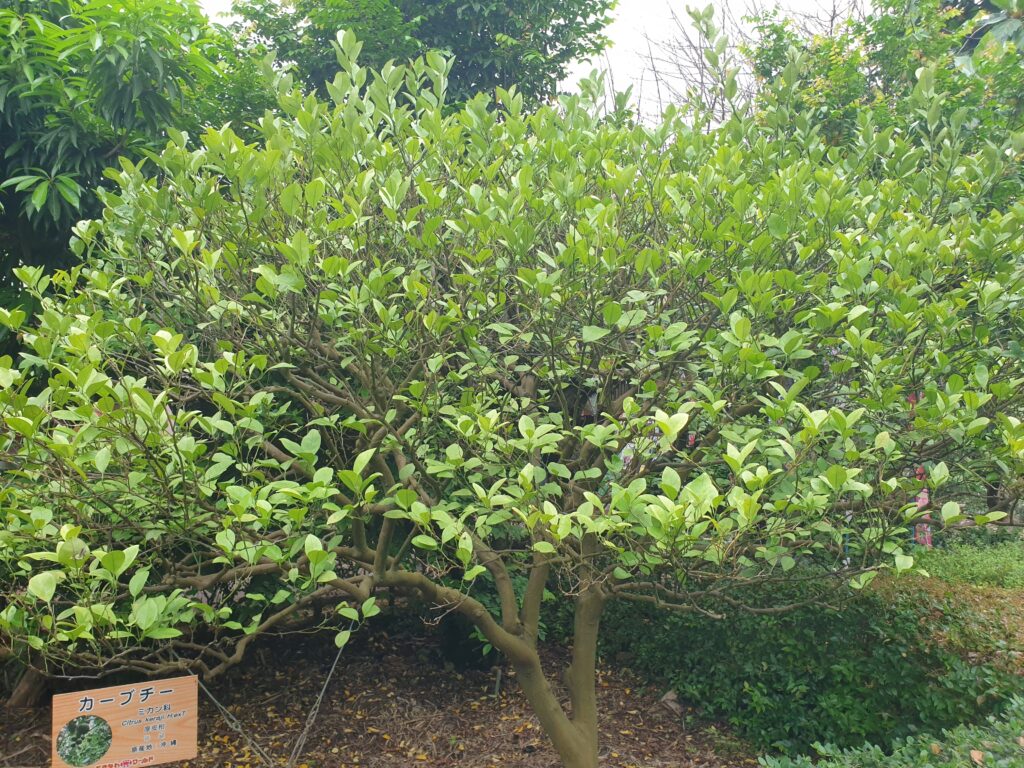
Citrus oto hort. ex Yu. Tanaka ‘Oto’
It appeared about 300 years ago and was called “Oto-kunembo” (Blue Mother of Nine), but it is said that later Kunembo was omitted and only “Oto” remained. The fruit is sweet and sour in taste, juicy and eaten mainly fresh. They can be used sour for cooking before they reach maturity. They weigh 70-80g, approximately 55mm in diameter. They have a thin, easily peelable skin, about 2mm thick, with a smooth surface that turns yellow-orange. The approximately 15 green polyembryonic seeds have a long beak-like projection. The number of segments in the fruit is 10-11. (J-FEC, 2024)
In the early Showa period, the harvest volume was about 300 tons and Oto represented the main stream of citrus cultivation in Okinawa Prefecture. As distribution of the highly marketable Tankan (Citrus tankan Hayata) gradually became popular, production declined from about the 1970s to the 1980s. There are still a few farms that grow Oto in the northern part of the island and it is sold occasionally for local consumption. The fruit is harvested from late November to January while still green, after which it turns yellow and is consumed (Orion Breweries, 2023). They gradually lose their acidity as they ripen. Annual production in 2003 was approximately 10 tonnes. Most of the fruit is sold by self-collection (J-FEC, 2024), with only about 2 tonnes going to the direct market (Okada, 2005).
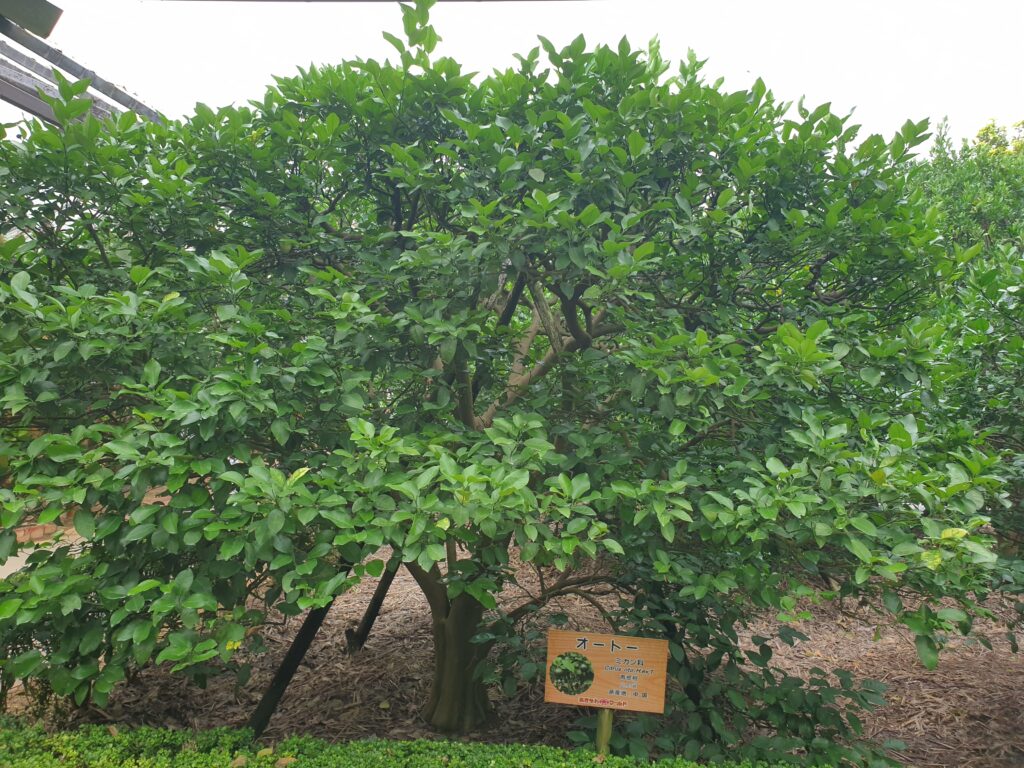
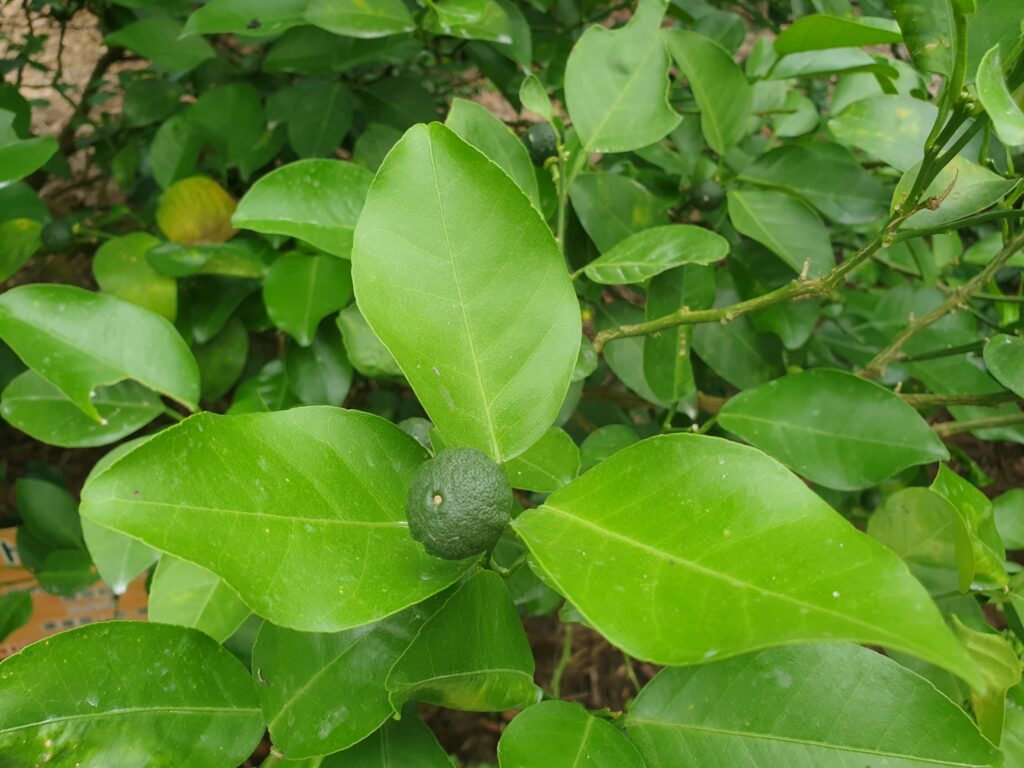

Citrus tarogayo hort. ex Tanaka ‘Tarogayo’
“Tarogayo” is an Okinawan word that means “Who are you?” or “Who do you belong to?” It is very difficult to distinguish from other species in the Yukunibu group, especially Kabuchii and Oto. It is said to have been given this name because of confusion about its relationship to Oto and Kabuchii (Tanaka, 1957).
Targayo is harvested from early November onwards and in Okinawa the fruit is ready to eat when the green colour has faded a little. Otherwise, the 3-4 mm thick skin turns light yellow-orange. It can be peeled easily. The number of segments is 8-9 (J-FEC, 2024). The yellow-orange, soft and juicy flesh is fragrant and has an elegant sweetness that makes it easy for children and the elderly to eat. The green polymebryonic seeds do not have a beak-like protrusion at the end, which distinguishes them from Kabuchii and Oto.(Orion Breweries, 2023). The fruits are relatively large, 65mm in diameter (J-FEC, 2024).
It is reported that the number of trees grown is smaller than that of Oto, sales are rare and most trees are grown for own consumption (Orion Breweries, 2023, J-FEC, 2024).
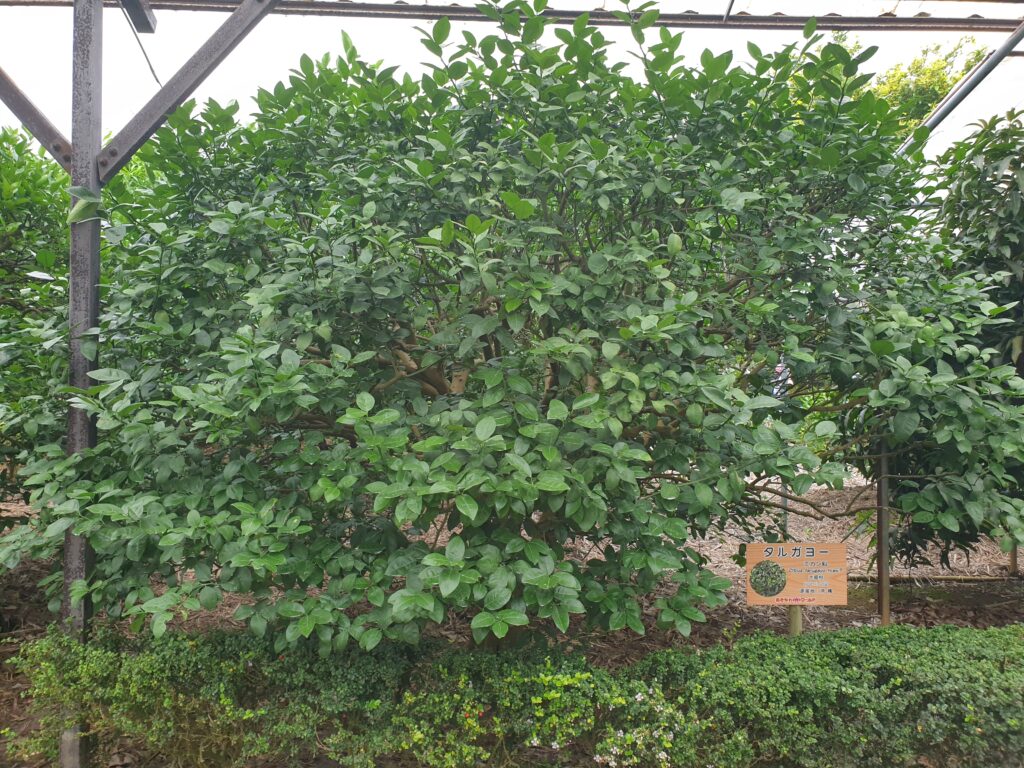
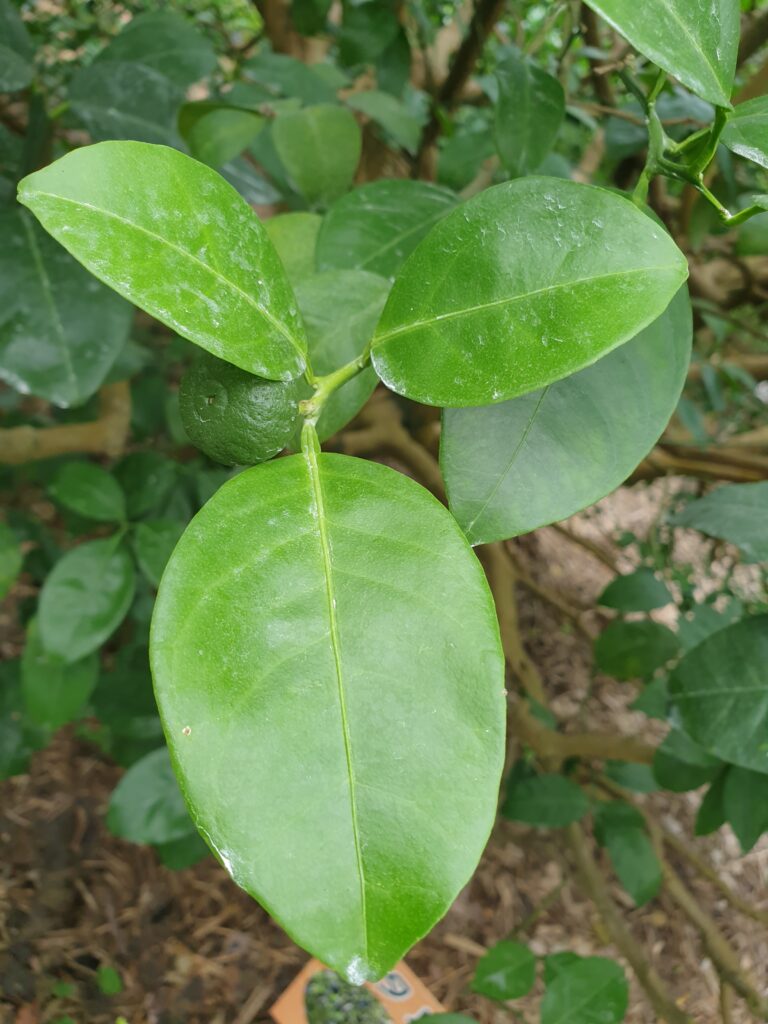
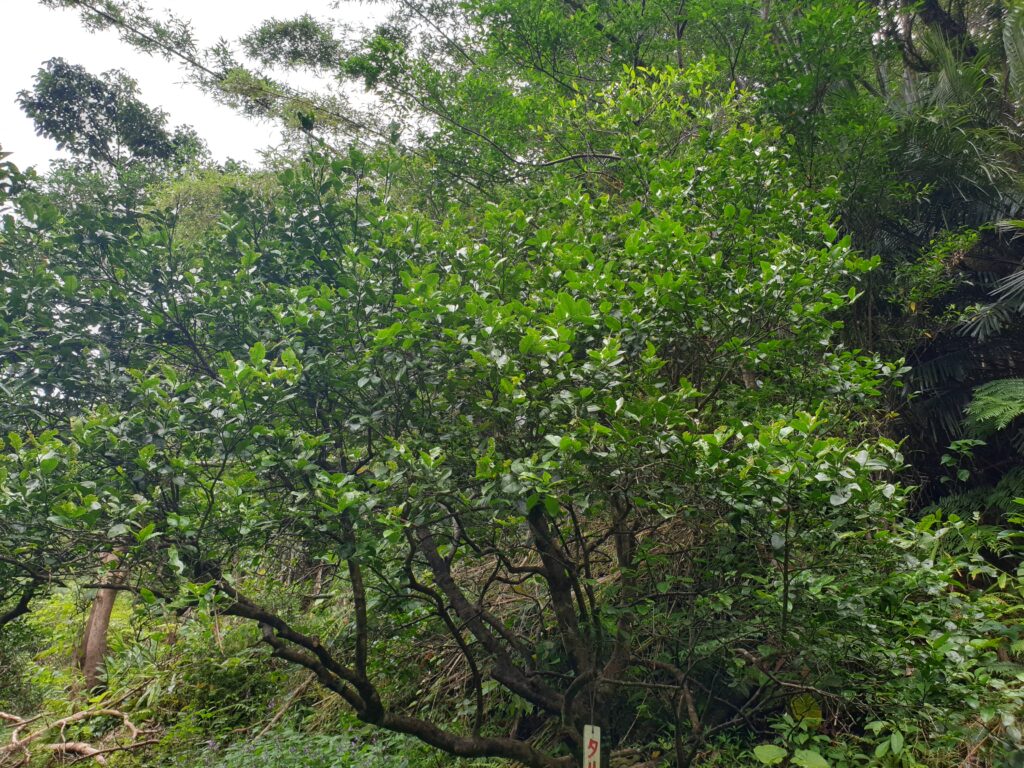

Citrus keraji hort. ex Tanaka ‘Keraji’
also ‘Hana Ryoji’ or ‘Hanaji mikan’
Another type related to Kunembo and Tanibuta is Keraji-mikan. It is a backcross of Kabuchii with Kunembo (Wu et al, 2021). Yamamoto et al. (2013) distinguished between Keraji, a nearly seedless species with smooth skin, and Kabuchii, which is seeded with a rough skin texture. Keraji achieves seedlessness through its own incompatibility, but can be pollinated by other species related to Kunembo (Yamamoto, 2010). The fruit is harvested green, the season is from October to December, and acidity decreases rapidly with maturity (JACK, 2024), but sugar content does not increase further (J-FEC, 2024). Fruit weight ranges from 54 to 100 g, so it is slightly larger than Kabuchii (Yamamoto et al., 2013), but not as aromatic. The diameter of the fruit is 55-60mm. The skin of the fruit is shiny and rough, though smoother than Kabuchii, 3-4mm thick, hard and tough. It contains essential oils and is very aromatic. The number of seeds is about 3, they are green and polyembryonic (J-FEC, 2024).
Cultivation of Keraji began more than 200 years ago, when wild plants were found on a small island east of the coral island of Kikaijima and brought to the village of Hana Ryoji (Kimura,1995). Given the findings on the origin of the species (Wu et al, 2021) it probably arrived here from Okinawa, either already as a hybrid or as the parent species of Kabuchii and Kunembo. Subsequent production was successful during the Taishō era, but now the decline continues to such an extent that the species is in danger of extinction. The species takes its name from the village of Keraji on Kikai Island in Kagoshima Prefecture, southern Japan (JACK, 2024),where it was cultivated, and even today Kikaijima Island is virtually the exclusive cultivation area.
In 2003, total production was about 3.5 tonnes. The fruit is not in large quantities and is rarely sold by individuals to the market. Most of the fruit is intended for direct consumption, the green ones are used for cooking. The slightly unripe fruits are used to remove the odours of the local speciality habu-saké (J-FEC, 2024). Recently, processed products have also started to appear on the market, indicating a certain turn for the better.
An interesting feature for cultivation in Europe is the claimed hardiness of -12 °C (Dekarz, 2023). However, the fruit of this cultivar does not meet the botanical description and it is questionable whether it is more likely to be a hybrid from a fruiting seedling. Certainly the fruits from the plant I have from Italy are considerably smaller than in Okinawa.

